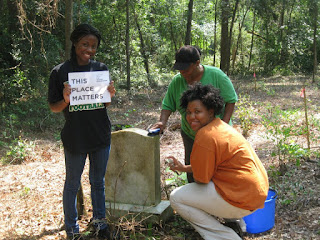Not many people outside of the archaeology realm are very familiar with Cultural Resource Management, but it plays a role in all of our lives. If you have ever driving on a public road or if you live in a large development, you likely benefitted from Cultural Resource Management (CRM for short). The majority of archaeologists that do not work in academia are employed with Cultural Resource Management firms. CRM involves documenting and evaluating sites, and mitigating the adverse effects of development projects and construction. The responsibilities of archaeologists working in this domain include archaeological surveys, recording historic structures, consulting with Native American tribes, evaluating cultural resources for their inclusion in the National Register of Historic Places, and assisting landowners and developers with compliance related to archaeological protection laws.
Cultural resources are governed under various state and federal laws. Section 106 of the National Historic Preservation Act of 1966 contains federal regulations regarding cultural resources and the review process for protecting and mitigating cultural resources during development or construction projects. These regulations come into play in the private sector when the construction or development project requires a federal permit or uses federal money. Projects that may require Section 106 review include projects like widening a highway, a major housing development, construction of state or federal lands, or anything else that may require a federal permit or use of federal funds. A state and local government may also have their own laws, regulations, and ordinances that trigger similar reviews and thus require an archaeologist to survey the project area.
 |
| Archaeologists conducting a cultural resources survey. (photo courtesy of University of West Florida) |
Cultural Resource Management tends to take place in the background. Archaeologists are usually out at the site before construction begins, and sometimes during construction if monitoring is deemed necessary. You probably won't even know they have been there. Often times we receive calls from concerned citizens asking about a development that is long underway. Sometimes it is a last ditch effort to stop the development. Sometimes it is genuine concern over potential archaeological sites. In order to receive the proper permits to begin construction, the developer will have had to go through the archaeological compliance process. So, by the time the bulldozers have appeared, the archaeologists have already come and gone and have already submitted their report to the state for review.
For more information on both federal and state laws you can check with your state's compliance and review section. In Florida, the Division of Historic Resources, housed within the Florida Department of State, is responsible for reviewing Section 106 projects. They also provide technical assistance to land owners and developers to ensure they are in compliance with state and federal cultural resource protection laws.




